# Generate Confluence release notes from merged GitHub PRs recipe
This use case guides you through connecting OpenAI, GitHub, and Confluence to create a powerful automation.
# What does this recipe do?
This recipe retrieves merged pull requests (PRs) weekly from GitHub, iterates through each one to check for a specific Jira project key in the PR body, and, if found, sends the PR body to ChatGPT for a summary of the changes. Each summarized PR is then added to a new release notes page in Confluence.
# Create your recipe
Complete the following steps to create a recipe that creates release notes in Confluence based on merged pull requests in GitHub:
USE CASES ARE INTENDED AS EXAMPLES ONLY
This use case serves as an example. Modifications to triggers, actions, or conditional logic may be necessary to adapt this recipe to your workflow.
Sign in to Workato.
Select the project where you plan to create the recipe.
Create connections for OpenAI, GitHub, and Confluence:
Create a OpenAI connection.
# Create an OpenAI connection
This step creates a connection between Workato and your OpenAI account.
Click Create > Connection.
Search for and select OpenAI on the New connection page.
Provide a name for your connection in the Connection name field.
 OpenAI connection setup
OpenAI connection setup
Use the Location drop-down menu to select the project where you plan to store the connection.
Enter your API key in the API key field. You can obtain this value from the OpenAI API keys page (opens new window).
Click Connect.
Create a GitHub connection.
# Create a GitHub connection
This step creates a connection between Workato and your GitHub account.
Click Create > Connection.
Search for and select GitHub on the New connection page.
Provide a name for your connection in the Connection name field.
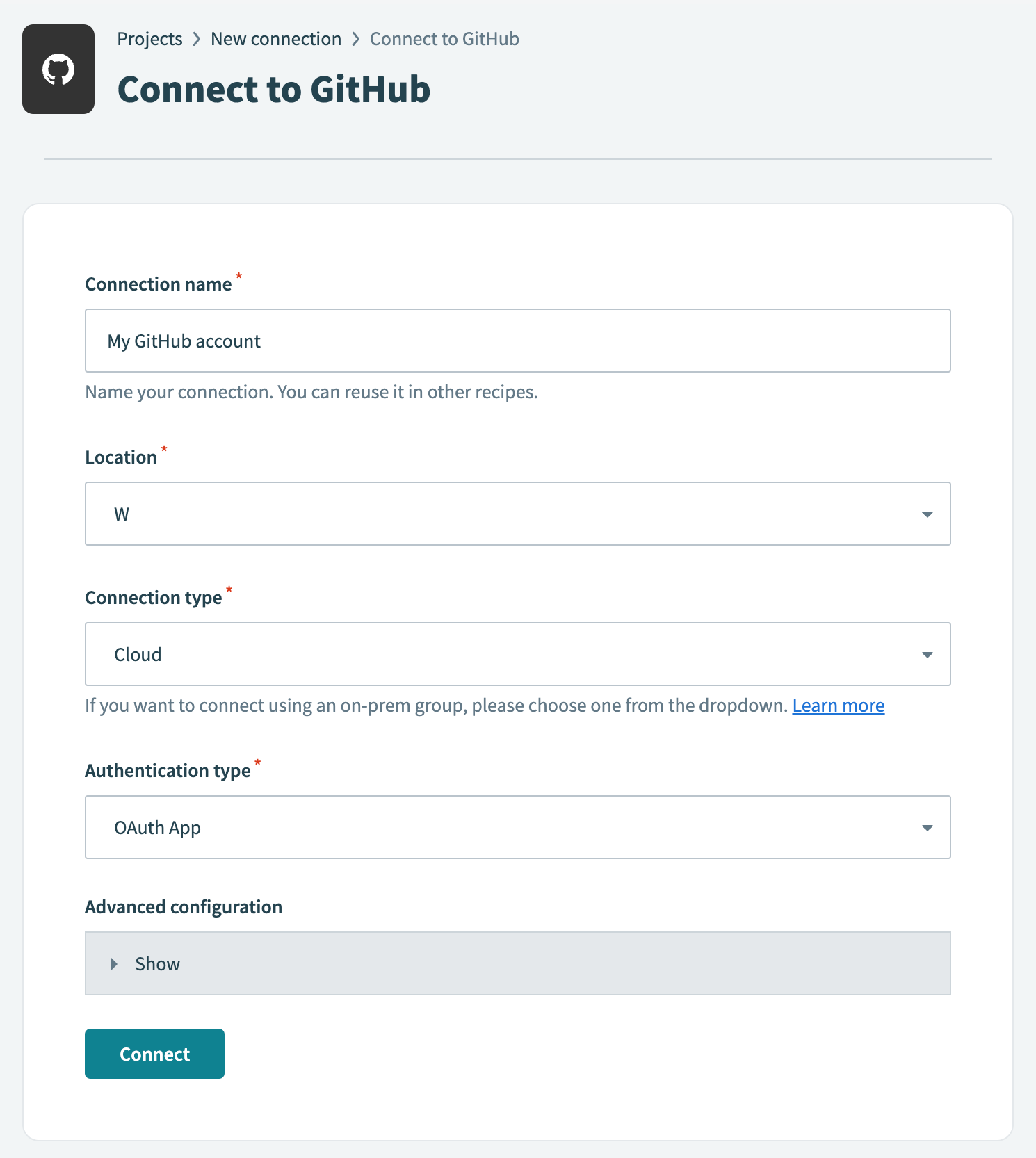 GitHub connection setup
GitHub connection setup
Use the Location drop-down menu to select the project where you plan to store the connection.
Use the Connection type drop-down menu to select the connection method you plan to use. You can select your on-prem group name or select Cloud to use a direct connection.
Select either OAuth App, GitHub App, or Personal Access Token in the Authentication type drop-down menu.
If you selected GitHub App:
Provide your app ID in the GitHub App ID field.
Enter the private key in the GitHub App Private key field.
Fill in the Installation ID field.
Optional. Expand Advanced configuration to provide the API Root URL, which is applicable when using GitHub Enterprise Server.
If you selected Personal Access Token:
Enter your personal access token in the Personal Access Token field.
Click Connect.
Create a Confluence connection.
# Create a Confluence connection
This step creates a connection between Workato and your Confluence account.
Click Create > Connection.
Search for and select Confluence on the New connection page.
Provide a name for your connection in the Connection name field.
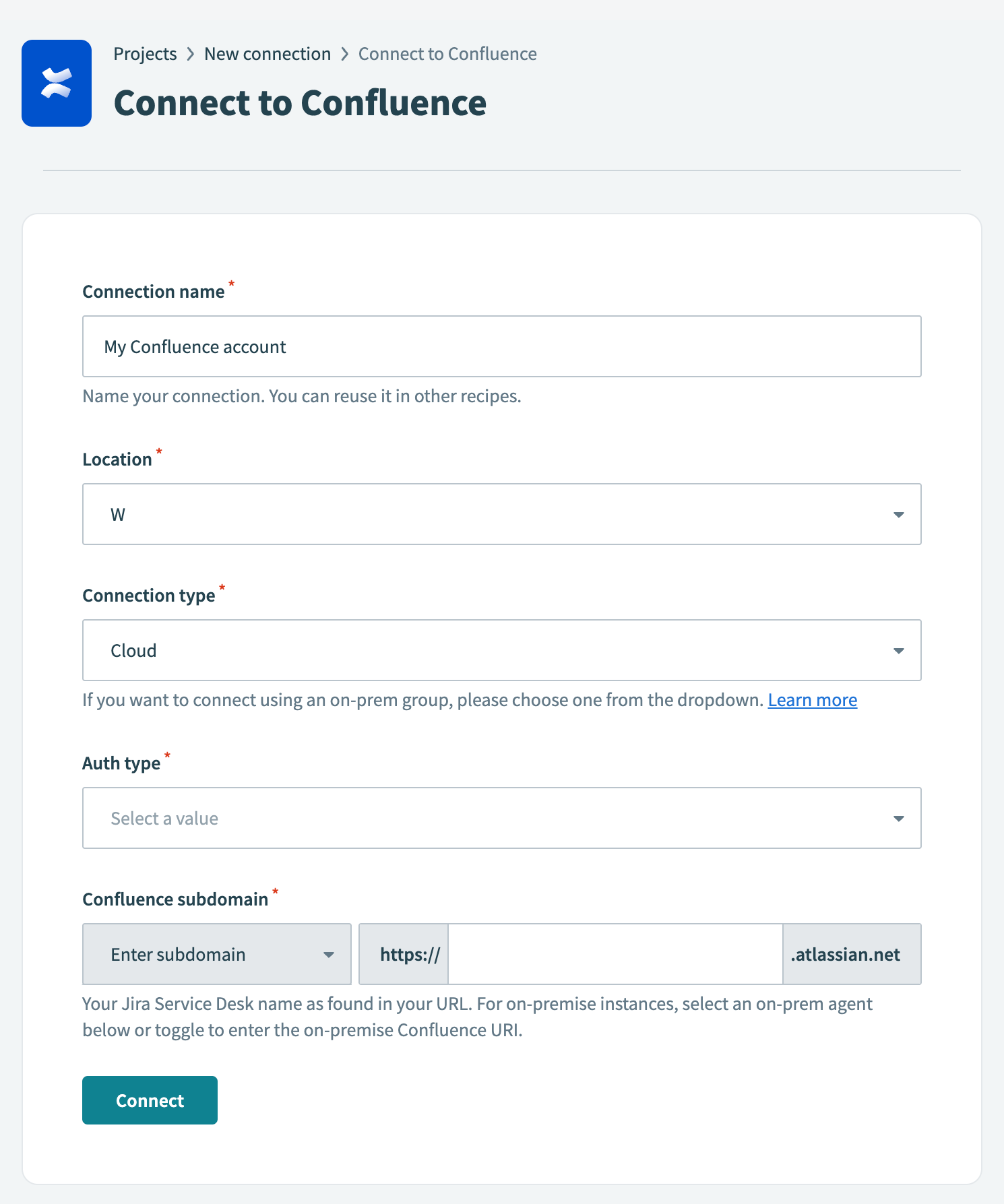 Confluence connection setup
Confluence connection setup
Use the Location drop-down menu to select the project where you plan to store the connection.
Use the Connection type drop-down menu to select the connection method you plan to use. You can select your on-prem group name or select Cloud to use a direct connection.
Use the Auth type drop-down menu to select your authentication method. Options include Basic, API token, and OAuth 2.0.
Provide your connection information.
- If using a cloud connection: Enter your Confluence subdomain in the Confluence subdomain field.
- If using an on-prem connection: Enter the root URI (includes protocol, optional port, and hostname) of your Confluence host in the Confluence root URI field.
Provide your authentication information.
If you selected Basic authentication:
Enter your username (not email) in the Username field.
Enter your password in the Password field.
If you selected API token:
Enter your email in the Email field.
Enter your API token in the API token field. You can create one by going to your Atlassian account and selecting Security (opens new window) > API tokens > Create API token.
If you selected OAuth 2.0:
Enter your client ID in the Client ID field.
Enter your client secret in the Client secret field.
Optional. Expand Advanced settings to select scopes to request for this connection. The following scopes are selected by default:
read:confluence-groupsread:confluence-content.summarywrite:confluence-contentsearch:confluence
Click Connect.
Go back to your project and click Create > Recipe.
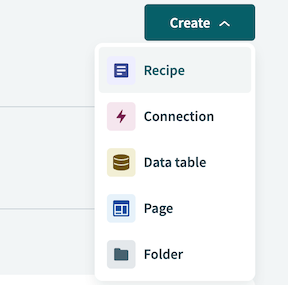 Create a new recipe
Create a new recipe
Enter a name for your recipe in the Name field.
Select the project where you plan to store the recipe from the Location drop-down menu.
Click Start building.
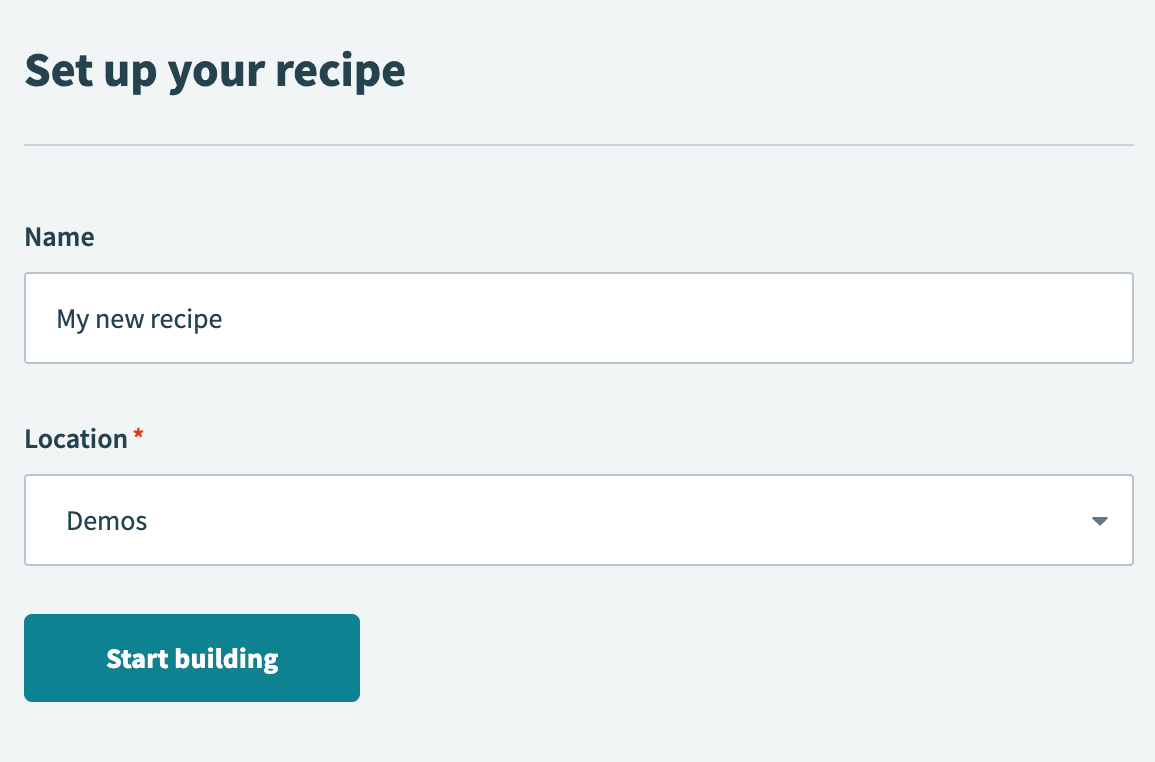 Start building your recipe
Start building your recipe
Click Pick a starting point, then select Run on a schedule. This creates a new recipe with the Scheduler by Workato New recurring event trigger. This trigger doesn't require a connection.
Set up your Scheduler by Workato New recurring event trigger.
# Set up Scheduler by Workato New recurring event trigger
This trigger sets the interval for how frequently the recipe runs. The Scheduler by Workato trigger doesn't require connection setup.
Click the trigger in the recipe editor.
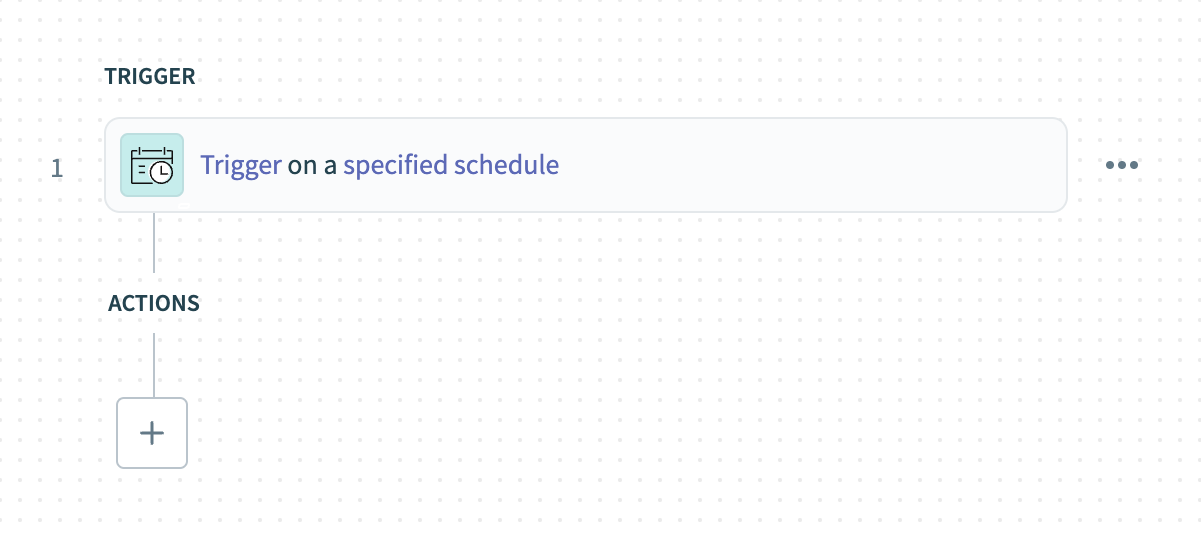 Click the trigger
Click the trigger
Use the Time unit drop-down menu to select Weeks.
- Available options include Minutes, Hours, Days, Weeks, Months, or Custom schedule.
Enter 1 in the Trigger every field to run the recipe weekly.
Choose the days the recipe should run in the Days of the week field. For example, select Monday.
Specify the time for the recipe to run in the Trigger at field. For example, enter 12:00 AM.
Optional. Select the timezone in the Timezone field. If left blank, the default is America/Los_Angeles.
Optional. Set the start date and time in the Start after field, or leave it blank to activate the trigger immediately after you start the recipe. You can't change this value after you run or test the recipe.
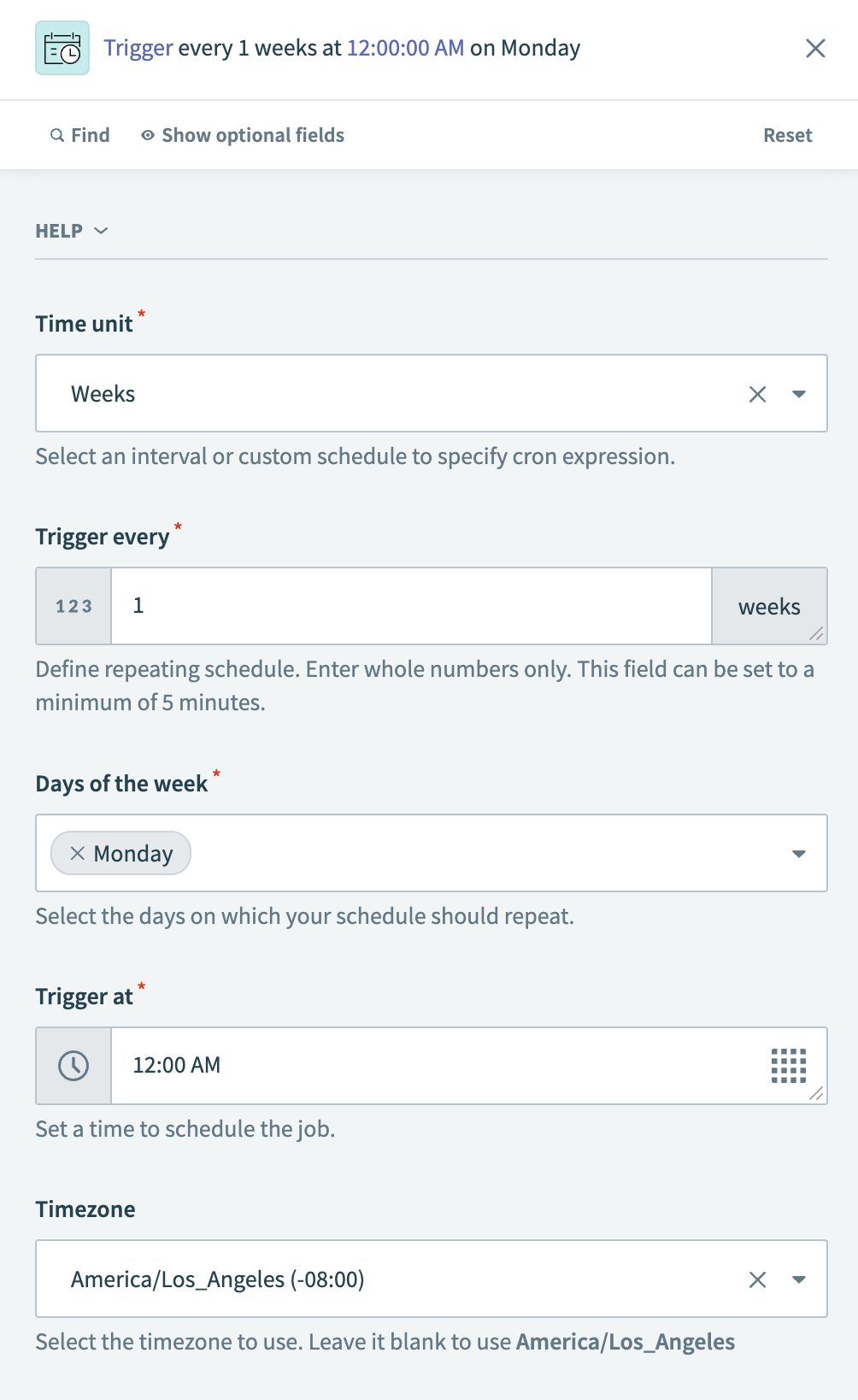 Configure the trigger
Configure the trigger
Click Save.
Click + Add step and select Action in app.
 Click Add step > Add action in app
Click Add step > Add action in app
Set up your GitHub Search issues/pull requests (batch) action.
# Set up GitHub Search issues/pull requests (batch) action
This step searches for pull requests in your selected GitHub repository that were merged since the previous week.
Search for GitHub and select it as your app.
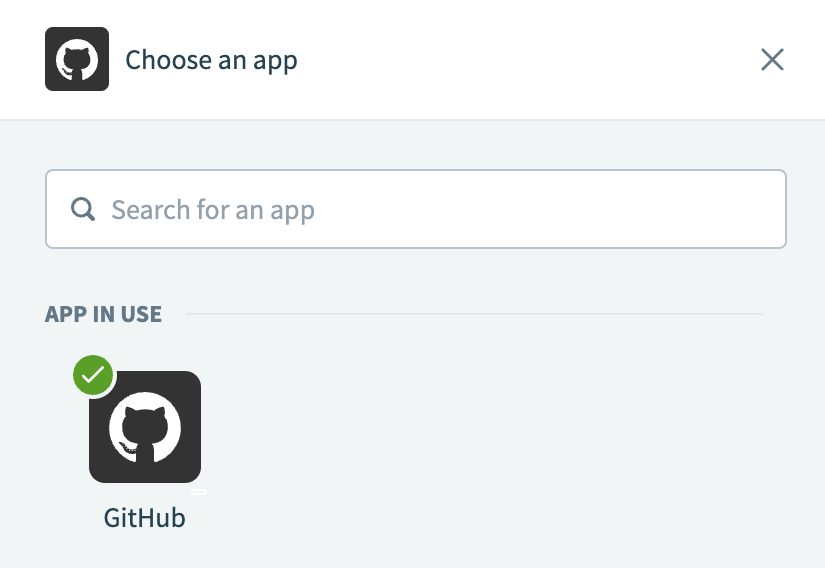 Choose GitHub
Choose GitHub
Select the Search issues/pull requests action.
 Select the Search issues/pull requests action
Select the Search issues/pull requests action
Select the GitHub connection you created in the preceding steps.
Use the Organization drop-down menu to select the organization containing the repository you plan to access.
Use the Repository name drop-down menu to select your repository.
Use the Type drop-down menu to select PR.
Use the Status drop-down menu to select Merged.
Switch the Closed after field to formula mode.
Map the Scheduler by Workato Scheduled time Step 1 datapill to the Closed after field.
Append - 7.days in the Closed after field.
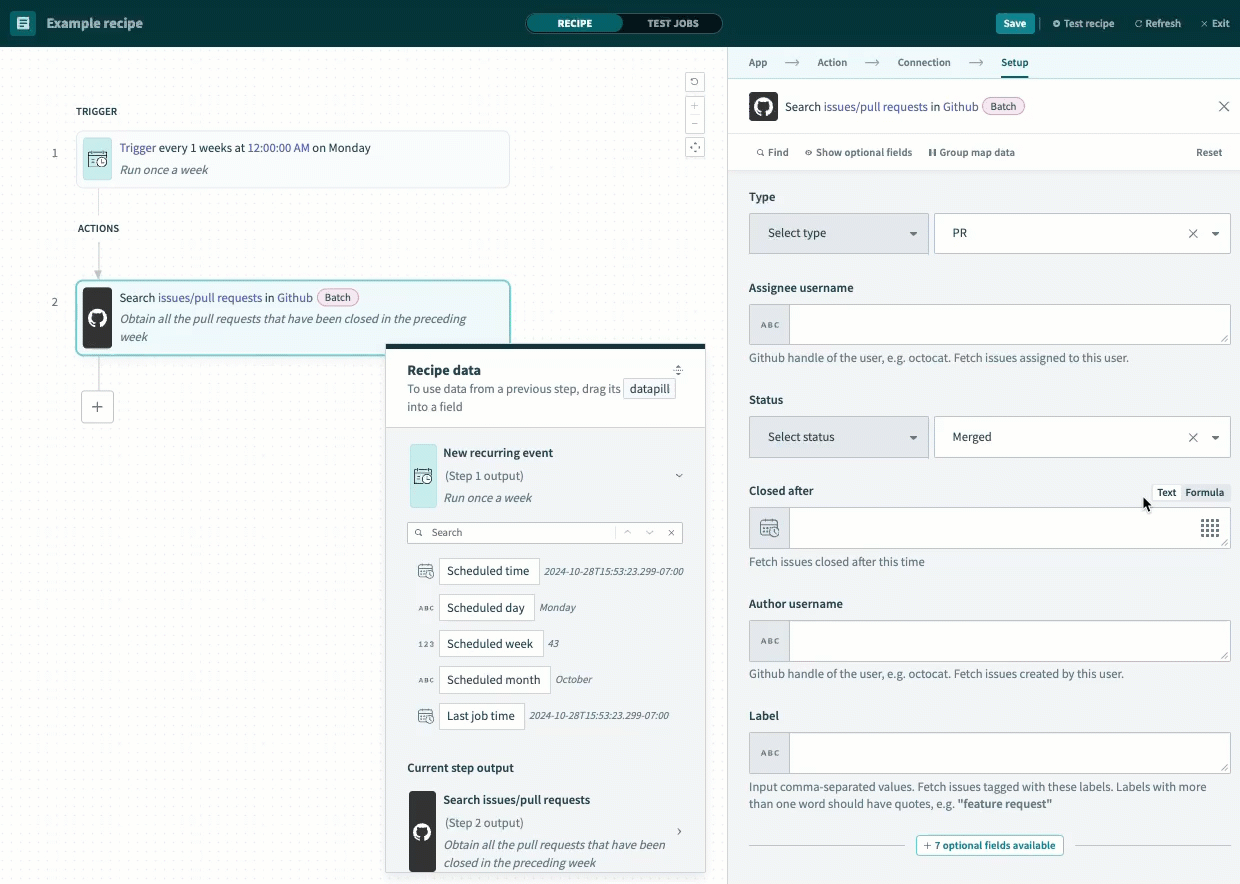 Fill out the Closed after field
Fill out the Closed after field
This formula filters the search to retrieve only pull requests merged since the previous week.
Click Save.
Click + Add step and select Action in app.
Set up your Variables by Workato Create variable action.
# Set up Variables by Workato Create variable action
This step creates an empty variable named Content.
Search for Variables by Workato and select it as your app.
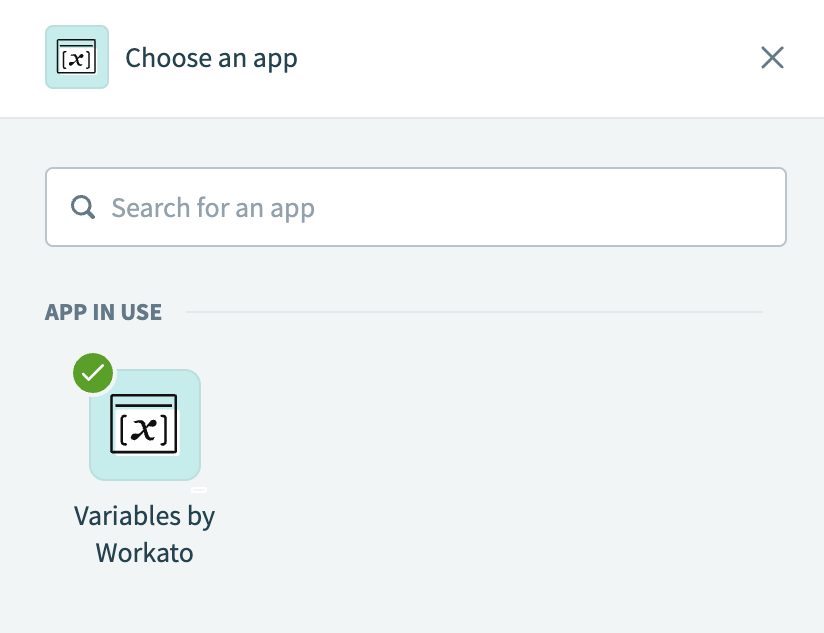 Choose Variables by Workato
Choose Variables by Workato
Select the Create variable action.
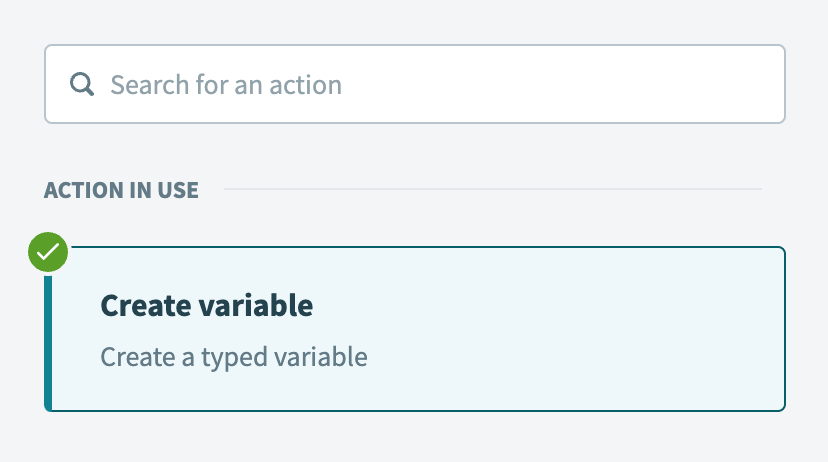 Select the Create variable action
Select the Create variable action
Click Add a variable.
Enter Content in the Label field.
Click Add variable.
Switch the Content field to formula mode and enter "" to initialize the variable with an empty string.
 Fill out the Content field
Fill out the Content field
This initialization is necessary for a later step, as you can't append a string (the content generated from ChatGPT) to a nil variable.
Click Save.
Click + Add step and select Repeat for each.
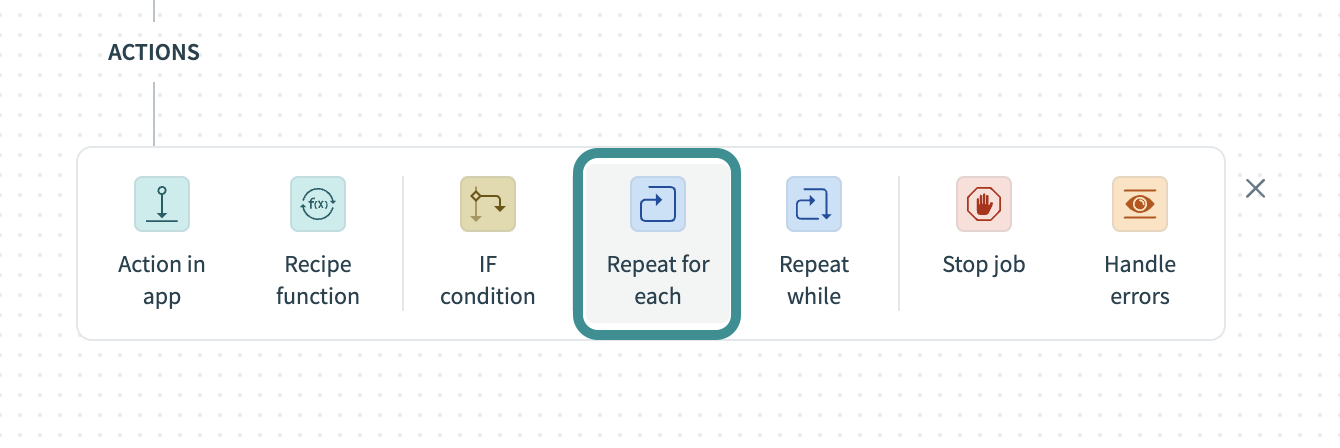 Click Add step > Repeat for each
Click Add step > Repeat for each
How does the Repeat for each condition work?
# Repeat for each condition GitHub and Jira example
A Repeat for each loop repeats one or more actions for each item in a list. The loop ends automatically when the entire list is processed.
Set up your Repeat for each loop.
# Set up a Repeat for each loop for GitHub pull requests
This step iterates through each of the pull requests that were merged in the past week.
Map the GitHub Issues Step 2 list datapill to the Input list field. This datapill contains a list of pull requests that match the search criteria specified in step 2.
Use the Repeat mode drop-down menu to select One item at a time.
Ensure No is selected in the Clear step output drop-down menu.
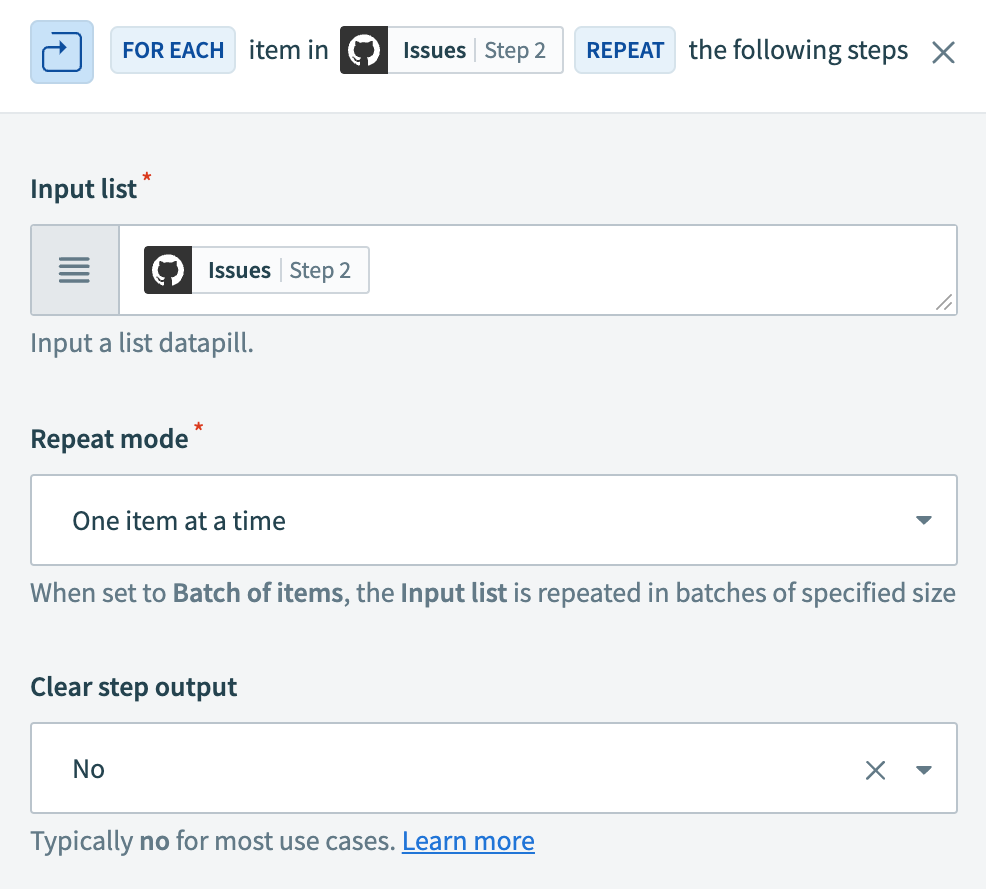 Configure the Repeat for each loop
Configure the Repeat for each loop
Click Save.
Click the … (ellipsis) next to the placeholder step in the recipe editor and select Delete.
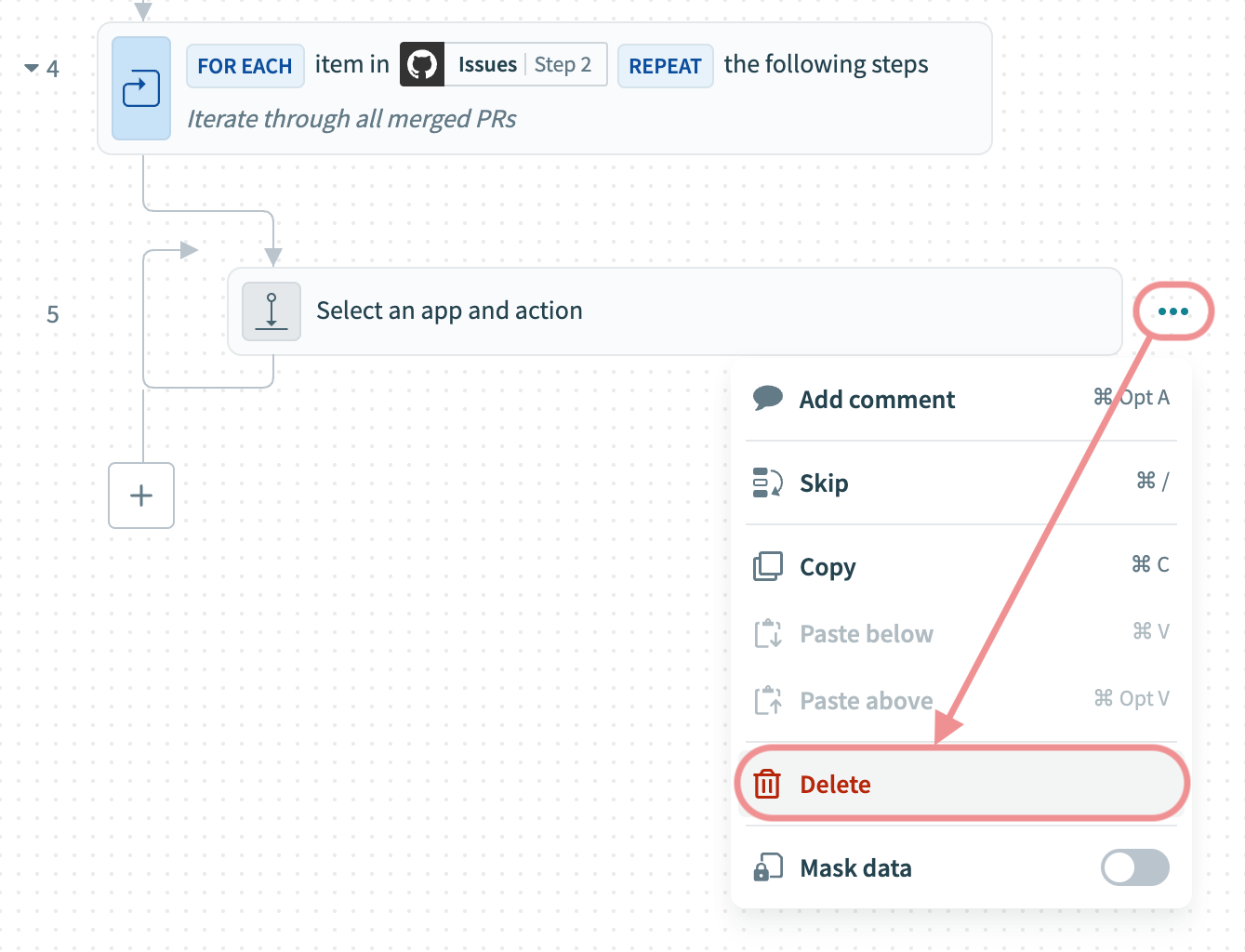 Delete the placeholder step
Delete the placeholder step
Click + Add step and select IF condition. Ensure this step is nested within the Repeat for each loop.
 Click Add step > IF condition
Click Add step > IF condition
How do IF conditions work?
# Jira and GitHub IF condition example
An IF condition enables you to make decisions based on specific conditions. You can control your recipe workflow by executing different actions depending on whether a condition you specify is true or false.
Set up your IF condition for GitHub and Jira.
# Set up an IF condition for GitHub and Jira
This step verifies if the GitHub pull request includes a specific Jira project key in the title or body. This ensures that only relevant pull requests linked to the designated Jira project are included in the release notes.
Map the Foreach Body Step 4 datapill to Data field. Alternatively, you can use the Title Step 4 datapill.
Use the Condition drop-down menu to select contains.
Enter the relevant Jira project key in the Value field. For example, to only include merged PRs with the Jira project key CT in release notes, enter CT- in this field.
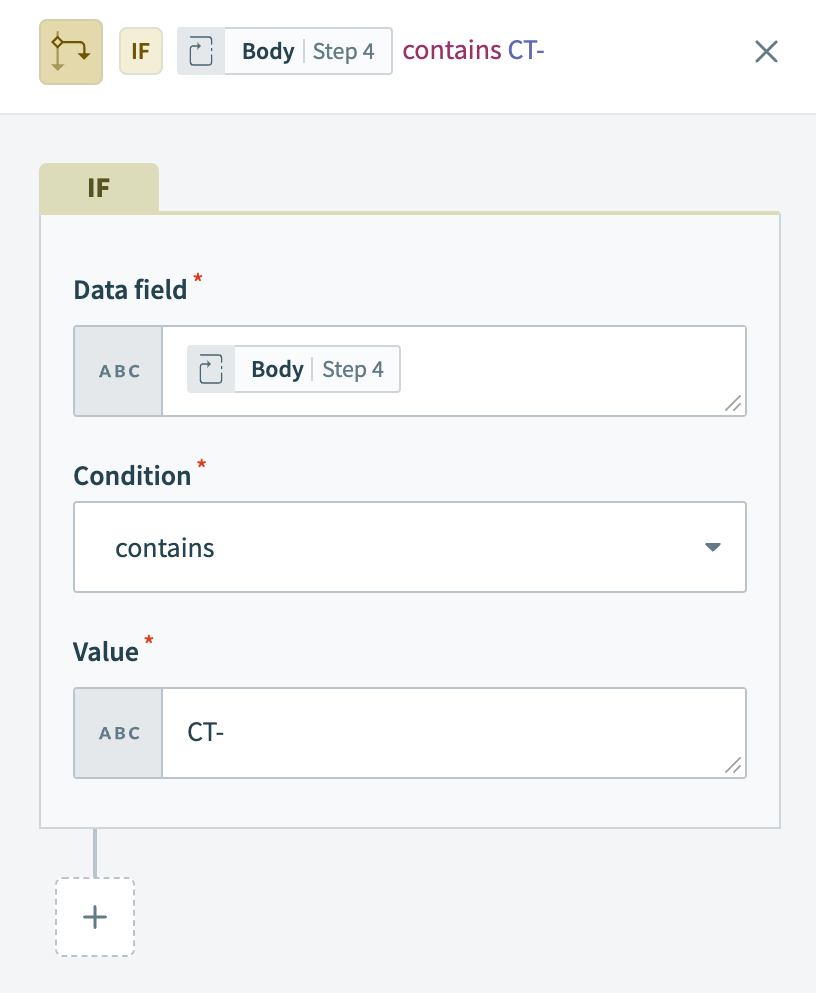 Configure the IF condition
Configure the IF condition
Click Save.
Click Select an app and action.
Set up your OpenAI Send messages to OpenAI models action.
# Set up OpenAI Send messages to OpenAI models action
This step sends a message to ChatGPT and asks it to generate a description of the merged pull request based on the PR body.
Search for OpenAI and select it as your app.
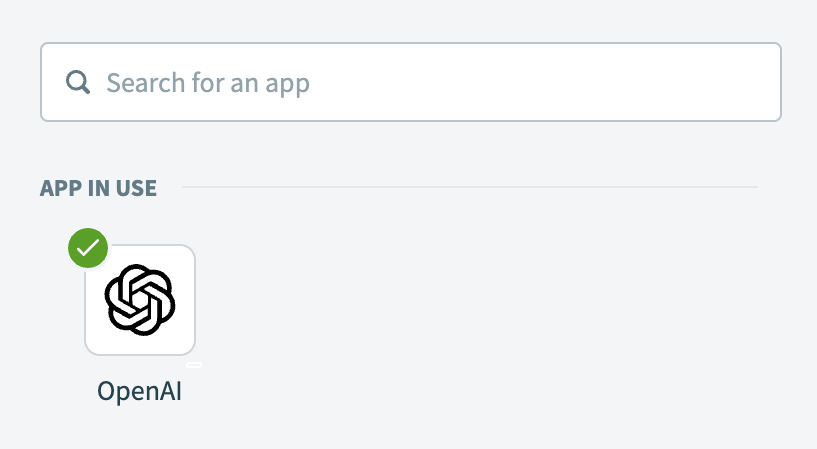 Choose OpenAI
Choose OpenAI
Select the Send messages to OpenAI models action.
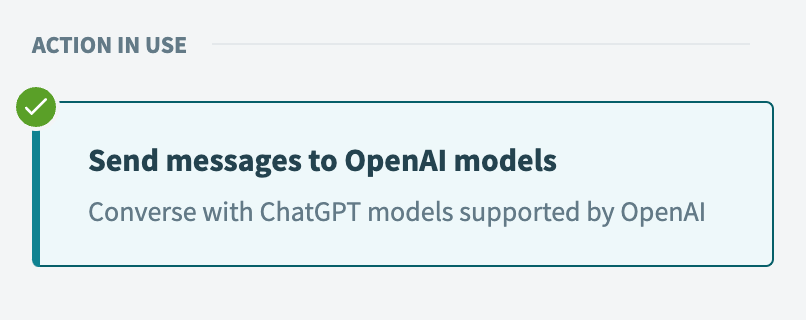 Select the Send messages to OpenAI models action
Select the Send messages to OpenAI models action
Select the OpenAI connection you created in the preceding steps.
Use the Message type drop-down menu to select Single message.
Enter the following prompt in the Text to send field:
Generate a clear, user-friendly description of the update using the details provided in the pull request description. Format each change as a standalone release note item without additional headings or introductory text. Keep it concise and use plain language.
Description:
Append the Foreach Body Step 4 datapill to the end of the message in the Text to send field.
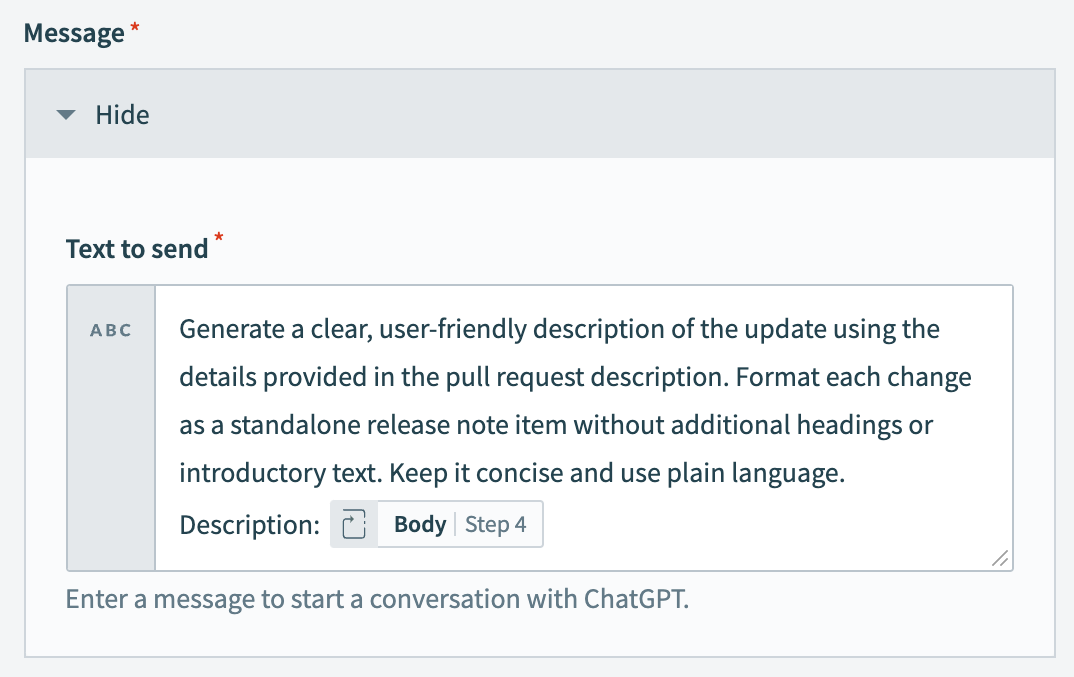 Map the Body datapill
Map the Body datapill
Optional. Use the Model drop-down menu to select the GPT model to use. For example, select gpt-4o-mini. Defaults to gpt-3.5-turbo if left blank.
Click Save.
Click + Add step and select Action in app. Ensure this step is nested within the IF condition.
Set up your Variables by Workato Update variables action.
# Set up Variables by Workato Update variables action
This step appends the ChatGPT response to the Content variable. The step links each merged PR title to the corresponding GitHub pull request and adds bullet points that summarize the changes described in the PR body.
Search for Variables by Workato and select it as your app.
 Choose Variables by Workato
Choose Variables by Workato
Select the Update variables action.
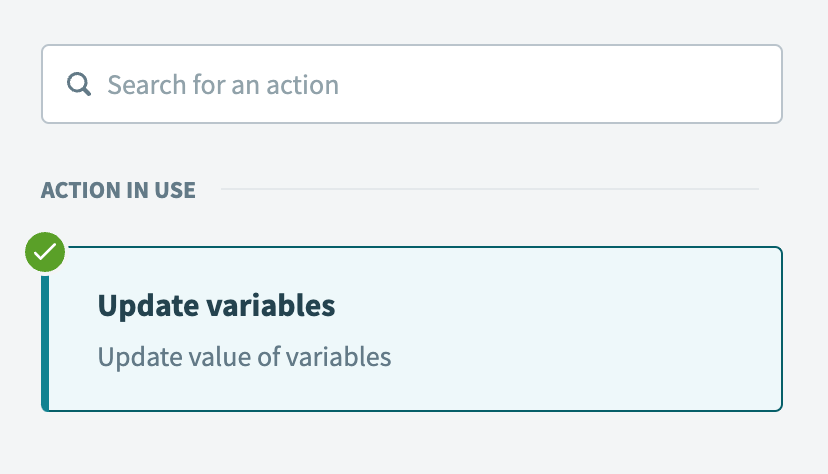 Select the Update variables action
Select the Update variables action
Use the Variable name drop-down menu to select Content (step 3).
Switch the Content field to formula mode and perform the following actions:
Map the Variables by Workato Content Step 3 datapill.
Enter + "\n" + "<a href='" + to place the link on a new line.
Map the Foreach Html URL Step 4 datapill.
Enter + "'>" +.
Map the Foreach Title Step 4 datapill.
Enter + "</a>" + "\n" + to add the closing link tag and begin a new line.
Map the OpenAI Best choice Step 6 datapill.
Enter + "\n" to create a new line for details about the next merged PR.
 Update the Content variable
Update the Content variable
Click Save.
Click + Add step and select Action in app. Ensure this step is placed outside of the IF condition and Repeat for each loop.
Set up your Confluence Create page action.
# Set up Confluence Create page action
This step creates the Confluence page with the release notes.
Search for Confluence and select it as your app.
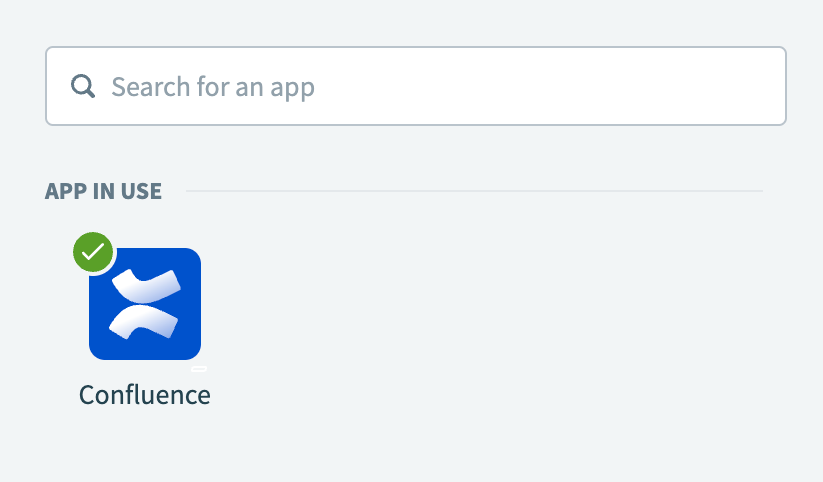 Choose Confluence
Choose Confluence
Select the Create page action.
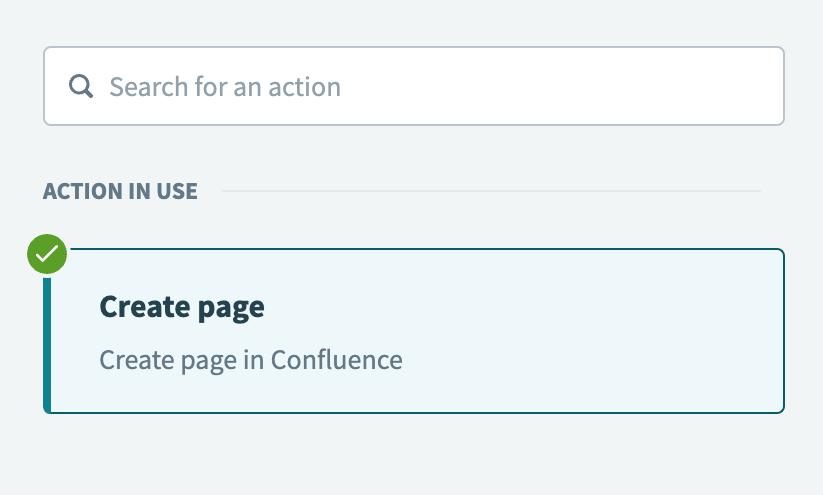 Select the Create page action
Select the Create page action
Select the Confluence connection you created in the preceding steps.
Enter the space key in the Space key field. This tells Confluence in which space the page should be created.
Switch the Title field to formula mode and enter the following:
"Release Notes for: " + today.to_s
This formula creates the title for the Confluence page in the following format: Release Notes for: YYYY-MM-DD.
Map the Variables by Workato Content Step 3 datapill to the Body field.
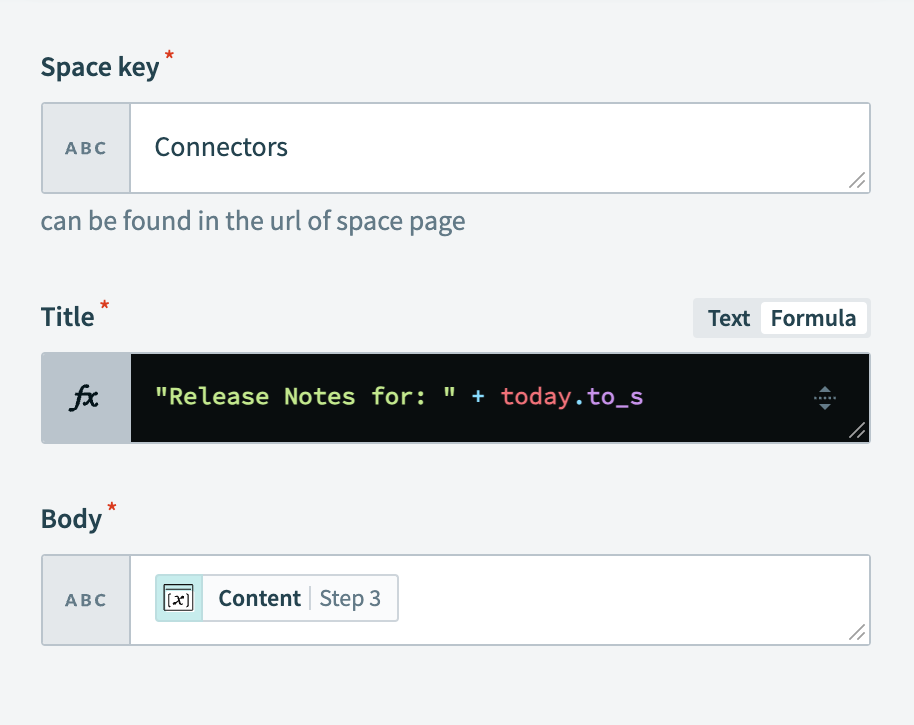 Example configuration of the Create page action
Example configuration of the Create page action
Click Save.
Your Generate Confluence release notes from merged GitHub PRs recipe is ready to test and implement.
Example recipe configuration.
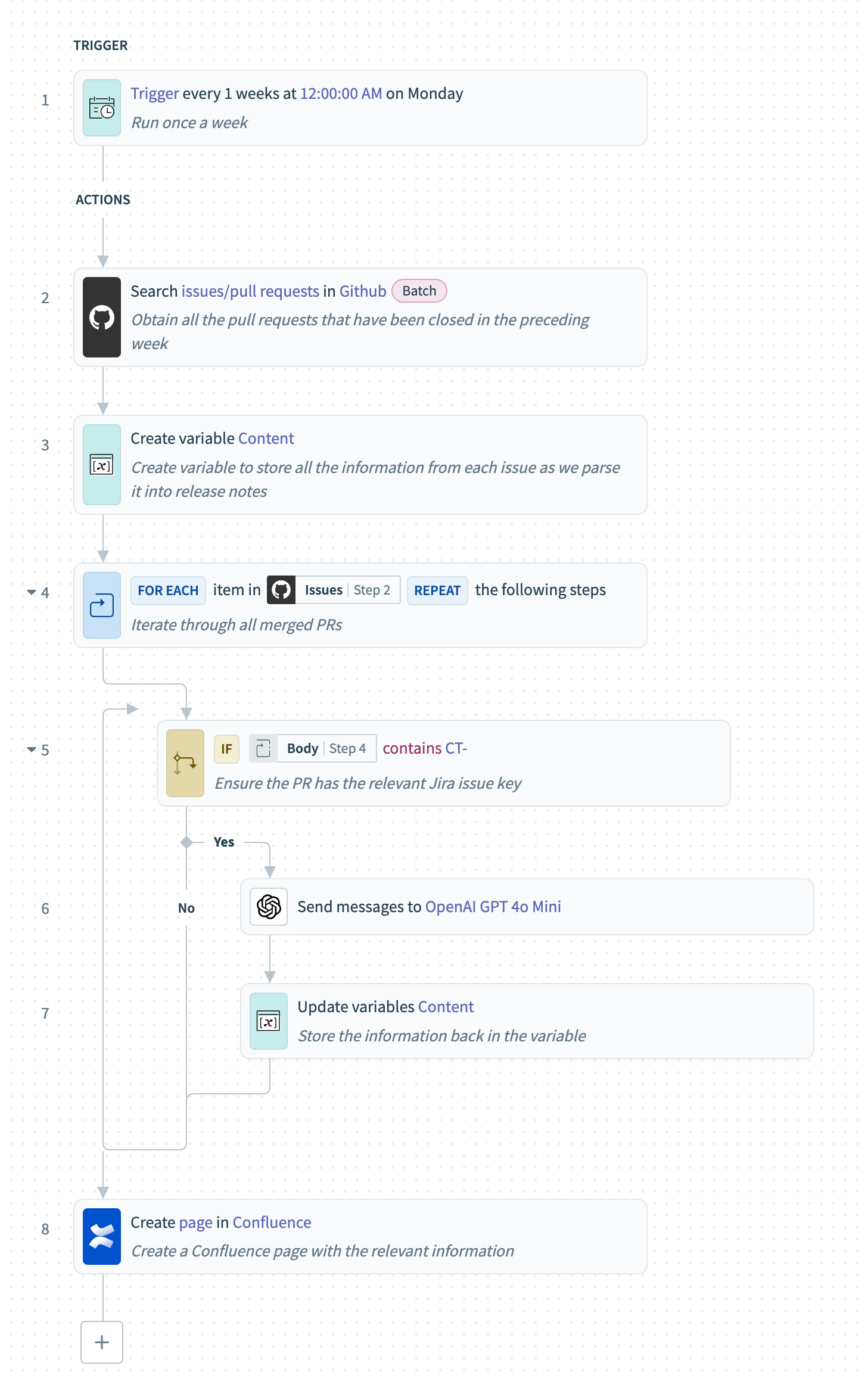 Generate Confluence release notes from merged GitHub PRs recipe
Generate Confluence release notes from merged GitHub PRs recipe
Last updated: 10/14/2025, 5:37:34 PM